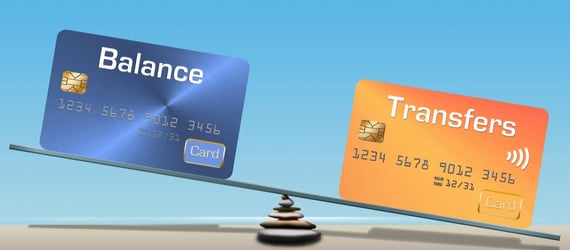

When you’re knee-deep in debt, saving money may fall to the bottom of your financial priority list. You may be laser-focused on putting every extra dollar you earn toward paying down those credit card balances. Unfortunately, this can do more financial harm than good.
The reality is you have to save money at the same time you’re trying to get out of debt. This is because it gives you some cushion in the event an unexpected bill pops up. Such unexpected expenses include things like a car or home repair, a medical emergency, or a babysitter for when your kid gets sick and you can’t miss work.
Those who don’t have any money stashed away for these unplanned costs are likely to rack up more debt and continue the vicious cycle all over again.
Still not convinced? Take a peek at this 2016 report from the Urban Institute, which found families who had even a small amount stashed away — between $250 to $750 — were nearly 30% less likely to miss a housing payment or utility bill in the event they experienced any disruption in income, compared with those who had less than $250 in savings.
Unsurprisingly, the report also found that having higher levels of savings provided more financial security, a goal more people should focus on.
Considering that 52% of Americans can’t come up with $500 without selling something or taking out a loan, as reported by the 2021 Retirement Confidence Index from SimplyWise, a financial management app, more consumers than ever need to refocus their financial priorities when paying down debt and add savings to the top of their money to-do list.
Here’s a quick guide on how to get started saving money while paying down debt.
1. Comb Through Your Bills
When was the last time you took a deep dive into your monthly bills? Even if you’re living paycheck to paycheck, you could be overlooking savings opportunities, and that wasted money could be put toward building up your emergency fund.
Begin reviewing your budget and look for recurring monthly expenses you no longer need or use and cancel them. When it comes to the services you can’t live without, spend time negotiating with your providers, as you may be able to score a lower-cost package for cable and internet or maybe even a lower premium on your auto insurance policy if you aren’t driving as much due to the pandemic.

Review your expenses to see which monthly bills you can cut out completely and which you can negotiate lower rates.
Consider switching service providers if you find a better rate at a competitor. You can even find free service alternatives such as free video streaming through your local library’s digital platform or free fitness programs through sites like Fitness Blender.
Several mobile carriers even offer free subscriptions to popular video streaming services. For example, Sprint Unlimited customers can get access to Hulu for no added cost, and other wireless carriers offer similar deals.
Bottom line: Do a little homework and put whatever money you free up in your budget directly into a separate savings account.
2. Automate Saving Small Amounts You Won’t Miss
When you don’t have a lot of money to save every month, it may seem pointless to start, but starting somewhere puts you in the right direction. Begin by setting up an automatic transfer of a small amount of money you won’t miss every week from your checking to your savings account, even if it’s just $10 or $20.
When the money is out of sight, it’s out of mind, and you will learn to live on less. Keep the momentum going by adjusting your transfers every few months by a few dollars, and if you get a raise or a better paying job, split the extra income you earn between debt repayments and boosting your savings.
3. Transfer Your Credit Card Balance
As you’re making big efforts to pay down debt, you probably notice one thing getting in your way of making real progress — interest fees. Considering the average credit card interest rate is nearly 18% for new offers and 14.58% for existing accounts, as reported by WalletHub’s Credit Card Landscape Report, these fees can take a big bite out of your debt payments.
However, you can make your monthly payment go further by moving your existing balance to a new card offering 0% interest on balance transfers.

A balance transfer can help you save a lot of money on credit card interest.
Such deals are usually good for a promotional period of 12 to 21 months, depending on the card offer, and the money saved on interest during this period can be used to boost your savings. Just make sure you’re comparing balance transfer credit cards and read the fine print before applying.
4. Put Your Deal Savings to Work
Regardless of how much you try to cut back on spending, you will need to buy certain items, from groceries to cleaning supplies to clothing for your growing kids. Shopping wisely and putting your savings to work is important.
First, make sure you’re applying coupons anytime you shop. To make saving effortless, download a savings tool like Cently, which automatically searches for, tests, and applies any available coupon codes and cash back offers at check out.
Next, make sure you’re tracking prices even after you buy something so you don’t miss out on a price adjustment. Tools like Paribus will automatically track prices of items you buy online and request money back for the difference in cost.
Every time you score a discount by using a coupon or getting a price adjustment, put the money you saved toward your savings. Since you were going to spend it anyway, you won’t miss those extra dollars.
5. Cash In On Clutter
Did you know that American households have more than 5 billion items going unused? This is according to a 2019 study from Mercari, a selling app, which goes to show that you may be sitting on hundreds of dollars’ worth of unneeded and unused items.
Taking the time to sort through your closet, garage, and attic space can help you uncover plenty of money-making opportunities, all of which can help you pay down debt and increase your savings at the same time.

You can earn money to put toward your debt repayments or savings by selling items around your home.
You can sell fashion and accessories at Poshmark, unused tech for next day payment at Decluttr.com (they even pay for you to ship the item in!), and home goods or kitchen gadgets on OfferUp or Facebook Marketplace. The money you make should go right to your savings!
6. Consider a Side Hustle
The fastest way to grow your savings and reach financial goals is to earn more money. Though getting a raise at your current job or finding a better-paying position may seem out of reach now, you still have options: Consider a side hustle.
You can do a number of flexible side hustles right from home whenever it’s convenient for you, which makes the prospects of working a second job a little less intimidating. For instance, you can become a virtual tutor through sites like Tutors.com or you can make up to $1,000 a month by pet-sitting through Rover.com.
Spend a little time researching your options and try different gigs until you find something you like.
Advertiser Disclosure
BadCredit.org is a free online resource that offers valuable content and comparison services to users. To keep this resource 100% free for users, we receive advertising compensation from the financial products listed on this page. Along with key review factors, this compensation may impact how and where products appear on the page (including, for example, the order in which they appear). BadCredit.org does not include listings for all financial products.
Our Editorial Review Policy
Our site is committed to publishing independent, accurate content guided by strict editorial guidelines. Before articles and reviews are published on our site, they undergo a thorough review process performed by a team of independent editors and subject-matter experts to ensure the content’s accuracy, timeliness, and impartiality. Our editorial team is separate and independent of our site’s advertisers, and the opinions they express on our site are their own. To read more about our team members and their editorial backgrounds, please visit our site’s About page.




